















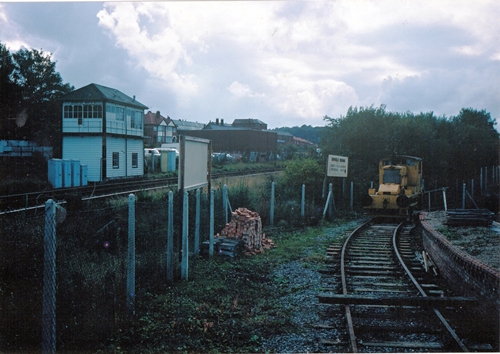 The
Redditch Railway Society was formed as the Redditch
Steam Locomotive Preservation Society in late 1980
with two aims to acquire a steam locomotive and if
it became available preserve the Redditch to Barnt
Green branch line. Unfortunately both aims were
never to be. The former was without trying and the
later well the Redditch to Barnt Green line has now
become too popular to even think of closing it. This
could however until the 1970’s could have easily
been the situation hence why the Society came into
being – maybe too late? Connecting railway
preservation and New Towns together had worked in
other parts of the country like the City of
Peterborough new town was very instrumental in the
creation of the Nene Valley Railway and Telford new
town where the Development Corporation purchased of
former Great Western 0-6-2T 5619 from Barry Scrap
yard in the mid 1970’s. The support of the
respective Development Corporations in Peterborough
and Telford were despite the fact that New Towns Act
that created the various Development Corporations
explicitly said they should not get involved in the
operation of transport.
The
Redditch Railway Society was formed as the Redditch
Steam Locomotive Preservation Society in late 1980
with two aims to acquire a steam locomotive and if
it became available preserve the Redditch to Barnt
Green branch line. Unfortunately both aims were
never to be. The former was without trying and the
later well the Redditch to Barnt Green line has now
become too popular to even think of closing it. This
could however until the 1970’s could have easily
been the situation hence why the Society came into
being – maybe too late? Connecting railway
preservation and New Towns together had worked in
other parts of the country like the City of
Peterborough new town was very instrumental in the
creation of the Nene Valley Railway and Telford new
town where the Development Corporation purchased of
former Great Western 0-6-2T 5619 from Barry Scrap
yard in the mid 1970’s. The support of the
respective Development Corporations in Peterborough
and Telford were despite the fact that New Towns Act
that created the various Development Corporations
explicitly said they should not get involved in the
operation of transport.
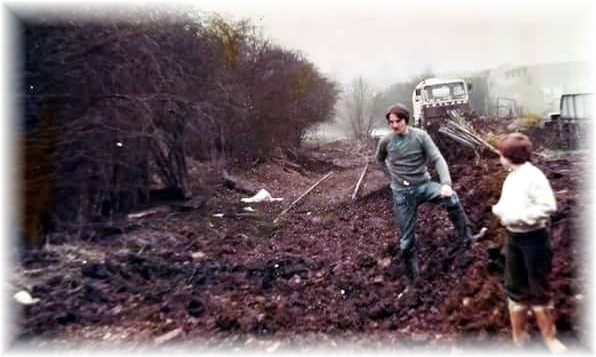 During
early 1981 the Society took on a lease on a small
section of land in Redditch next to the Redditch to
Barnt Green and on the edge of the Enfield
Industrial Estate. This had until 1970 been part of
the private siding for T&M Dixon (which stood
for Thomas and Mathew Dixon) who were local coal
merchants with a main depot at Redditch who also had
offices at Studley and Astwood Bank and Evesham
Railway Stations. The Society became the owner of
112 yards of track though it was under at least 2 to
3 feet of soil so the first job was to dig the track
out by hand.
During
early 1981 the Society took on a lease on a small
section of land in Redditch next to the Redditch to
Barnt Green and on the edge of the Enfield
Industrial Estate. This had until 1970 been part of
the private siding for T&M Dixon (which stood
for Thomas and Mathew Dixon) who were local coal
merchants with a main depot at Redditch who also had
offices at Studley and Astwood Bank and Evesham
Railway Stations. The Society became the owner of
112 yards of track though it was under at least 2 to
3 feet of soil so the first job was to dig the track
out by hand.
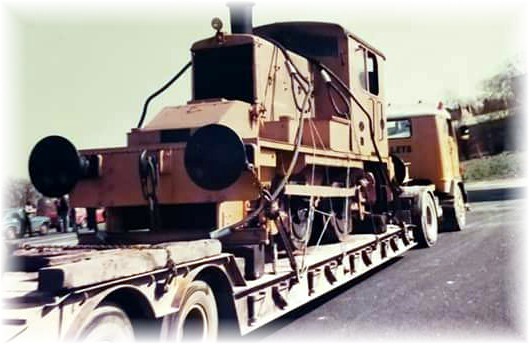 In March 1981 the society acquired its
first locomotive a 0-4-0 diesel shunter built by
John Fowler of Leeds in 1948 (works number 4100013)
from Garringtons in Bromsgrove where it had worked
all of it’s industrial life shunting wagons from the
factory out into the goods yard at Bromsgrove
station.
In March 1981 the society acquired its
first locomotive a 0-4-0 diesel shunter built by
John Fowler of Leeds in 1948 (works number 4100013)
from Garringtons in Bromsgrove where it had worked
all of it’s industrial life shunting wagons from the
factory out into the goods yard at Bromsgrove
station.
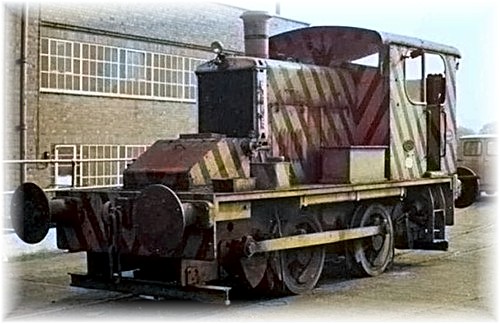 As the track had still to be cleared it was
placed on an adjacent short length of track. It was
moved in early 1984 from this short length of track
onto the now cleared former T&M Dixon siding.
The pictures show the locomotive arriving at Enfield
in Redditch on a low loader and in earlier times in
its yellow and black livery when the engine was
still in use at Garringtons in Bromsgrove.
As the track had still to be cleared it was
placed on an adjacent short length of track. It was
moved in early 1984 from this short length of track
onto the now cleared former T&M Dixon siding.
The pictures show the locomotive arriving at Enfield
in Redditch on a low loader and in earlier times in
its yellow and black livery when the engine was
still in use at Garringtons in Bromsgrove.
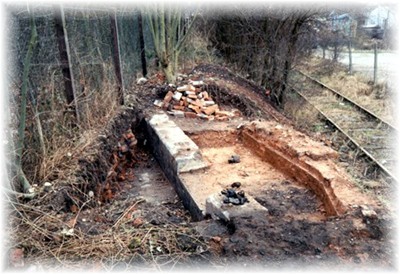 Part
of the Society’s land also consisted of part of the
former Redditch Locomotive Shed and the remained
were uncovered by Society members to reveal that the
former shed pit and floor still remained. The
Redditch shed remained open until 1 June 1964. At
that time station pilot duties at Redditch were
transferred from steam to diesel operation with
Saltley Shed in Birmingham providing a 0-6-0 diesel
shunter (normally a Class 11 locomotive). On
closure, the Redditch shed was demolished by simply
filling the inspection pit with the rubble from the
walls.
Part
of the Society’s land also consisted of part of the
former Redditch Locomotive Shed and the remained
were uncovered by Society members to reveal that the
former shed pit and floor still remained. The
Redditch shed remained open until 1 June 1964. At
that time station pilot duties at Redditch were
transferred from steam to diesel operation with
Saltley Shed in Birmingham providing a 0-6-0 diesel
shunter (normally a Class 11 locomotive). On
closure, the Redditch shed was demolished by simply
filling the inspection pit with the rubble from the
walls.
Like many railway preservation groups of the 1970's and 1980's the society looked first of all at what was still at Barry Scrap yard in South Wales and two locomotives were connected with the society. Both were former Great Western Railway freight locomotives.
 Very
shortly after the formation of the Society in late
1980 the Society placed a reservation on former
Great Western Railway 2-8-0 tank locomotive 4270 at
Woodham’s scrap yard at Barry in South Wales. The
Society was quoted a purchase price of £7,500.
However before the purchase price could be raised a
counter bid for the locomotive was made by the
Swansea Vale Railway and they subsequently purchased
the locomotive. The locomotive has been restored to
working order and is currently running on the
Gloucestershire and Warwickshire Railway. 4270 is
one of significant number of locomotives
owned by Jeremy Hosking.
Very
shortly after the formation of the Society in late
1980 the Society placed a reservation on former
Great Western Railway 2-8-0 tank locomotive 4270 at
Woodham’s scrap yard at Barry in South Wales. The
Society was quoted a purchase price of £7,500.
However before the purchase price could be raised a
counter bid for the locomotive was made by the
Swansea Vale Railway and they subsequently purchased
the locomotive. The locomotive has been restored to
working order and is currently running on the
Gloucestershire and Warwickshire Railway. 4270 is
one of significant number of locomotives
owned by Jeremy Hosking.
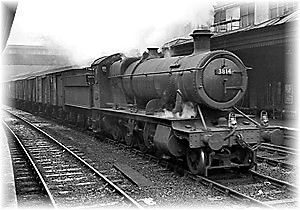 With
the loss of 4270 the Society placed a reservation on
former Great Western Railway 2-8-0 tender locomotive
tank locomotive 3814 at Woodham’s scrap yard at
Barry in South Wales. The Society was quoted a
purchase price of £7,500 for the locomotive and
£1,500 for a tender. In 1984 it became apparent the
Society could not raise the necessary purchase price
and reservation was dropped. In 1986 the locomotive
went on to be purchased by Peter Robinson and the
locomotive was moved to North
York Moors Railway for restoration. During 2018 the
locomotive was moved to the Llangollen
Railway where it is planned to complete the
restoration.
With
the loss of 4270 the Society placed a reservation on
former Great Western Railway 2-8-0 tender locomotive
tank locomotive 3814 at Woodham’s scrap yard at
Barry in South Wales. The Society was quoted a
purchase price of £7,500 for the locomotive and
£1,500 for a tender. In 1984 it became apparent the
Society could not raise the necessary purchase price
and reservation was dropped. In 1986 the locomotive
went on to be purchased by Peter Robinson and the
locomotive was moved to North
York Moors Railway for restoration. During 2018 the
locomotive was moved to the Llangollen
Railway where it is planned to complete the
restoration.
Once it became apparent the Society was not going to raise the money needed to purchase a locomotive from Barry Scrap yard it looked at industrial locomotives:
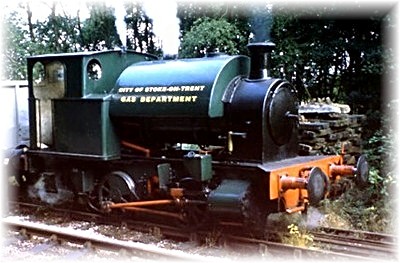 In
late 1982 two locomotives at the former Brookfield
Foundry & Engineering Company Ltd were put up for
sale by auction a 0-6-0 Bagnall and this 0-4-0ST
Kerr Stuart built locomotive (works number 4388). A
number of Society member pledged money to create a
potential purchase fund for the latter Kerr Stuart
locomotive. The locomotive is unique as it
was the only standard gauge version of the
design they built for City of Stoke Gas
works. It is very much a scaled up version
of the many narrow gauge engines they built. However the Society was out
bid at the auction by a member of the Foxfield
Railway and the locomotive moved to that railway on
13 February 1983. The locomotive then moved to the
Crewe Heritage Centre in July 1989 and was restored
to working order. The locomotive saw use at the
Foxfield Railway. In early 2020 the
locomotive was purchased by Jack Dibnah, the
son of the late Fred Dibnah and Bolton
Steeple jack, with a view of restoring it to
working order.
In
late 1982 two locomotives at the former Brookfield
Foundry & Engineering Company Ltd were put up for
sale by auction a 0-6-0 Bagnall and this 0-4-0ST
Kerr Stuart built locomotive (works number 4388). A
number of Society member pledged money to create a
potential purchase fund for the latter Kerr Stuart
locomotive. The locomotive is unique as it
was the only standard gauge version of the
design they built for City of Stoke Gas
works. It is very much a scaled up version
of the many narrow gauge engines they built. However the Society was out
bid at the auction by a member of the Foxfield
Railway and the locomotive moved to that railway on
13 February 1983. The locomotive then moved to the
Crewe Heritage Centre in July 1989 and was restored
to working order. The locomotive saw use at the
Foxfield Railway. In early 2020 the
locomotive was purchased by Jack Dibnah, the
son of the late Fred Dibnah and Bolton
Steeple jack, with a view of restoring it to
working order.
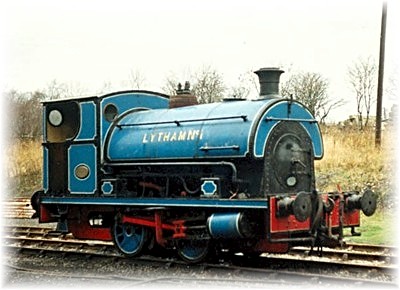 This
locomotive had been built by Peckett & Sons at
Bristol in 1949. (works Number 2111). It had been
preserved privately by Mr. J. Morris of Lytham St.
Annes and was exhibited in his "Motive Power Museum"
at Lytham St. Annes. The locomotive was put up for
sale in 1984 and the Society entered into
negotiations like with the Sentinel to purchase it.
However before the purchase price could be raised it
was sold to a Peak Rail member. In 1990 the
locomotive moved to Midland Railway Centre at
Butterley.
This
locomotive had been built by Peckett & Sons at
Bristol in 1949. (works Number 2111). It had been
preserved privately by Mr. J. Morris of Lytham St.
Annes and was exhibited in his "Motive Power Museum"
at Lytham St. Annes. The locomotive was put up for
sale in 1984 and the Society entered into
negotiations like with the Sentinel to purchase it.
However before the purchase price could be raised it
was sold to a Peak Rail member. In 1990 the
locomotive moved to Midland Railway Centre at
Butterley.
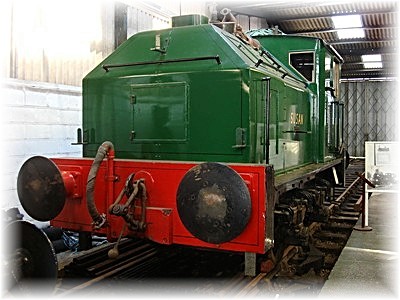 Built
in 1952, No. 9537 was delivered new, with sister
loco No. 9536, to the Chesterfield Tube Co. Ltd,
Chesterfield, Derbyshire. Both locos were named
after the children of the works marketing director:
No. 9536 became Timothy, and No. 9537, Susan. In
1967 Timothy was part-exchanged for a Thomas Hill
diesel loco, but his 'sister' Susan was sold for
preservation to Mr. J. Morris of Lytham St. Annes,
and exhibited in his "Motive Power Museum" from
1965. The locomotive was put up for sale in 1984 and
the Society entered into negotiations like with the
Peckett to purchase but it was eventually sold to a
member of the Quainton Road Railway Society.
Built
in 1952, No. 9537 was delivered new, with sister
loco No. 9536, to the Chesterfield Tube Co. Ltd,
Chesterfield, Derbyshire. Both locos were named
after the children of the works marketing director:
No. 9536 became Timothy, and No. 9537, Susan. In
1967 Timothy was part-exchanged for a Thomas Hill
diesel loco, but his 'sister' Susan was sold for
preservation to Mr. J. Morris of Lytham St. Annes,
and exhibited in his "Motive Power Museum" from
1965. The locomotive was put up for sale in 1984 and
the Society entered into negotiations like with the
Peckett to purchase but it was eventually sold to a
member of the Quainton Road Railway Society.
In 1994 the landlord gave the Society notice to quit the small site in Redditch it had occupied since 1981. The track and the diesel locomotive were donated to the Chasewater Railway. Lifting and dismantling of the track took place over several weekends by members of both societies in early April 1994. Removal of both the track and locomotive were only possible by means of a mobile crane. This had to be set up in cement works next to the sidings. Track and the locomotive were loaded onto lorries on Saturday 23rd April 1994 and were moved to Chasewater Railway the same day. The track was put to use on the causeway extension at Chasewater.
The following pictures were taken on Saturday 23rd April 1994 and show the loading of the Fowler locomotive onto a low loader for transportation to the Chasewater Railway
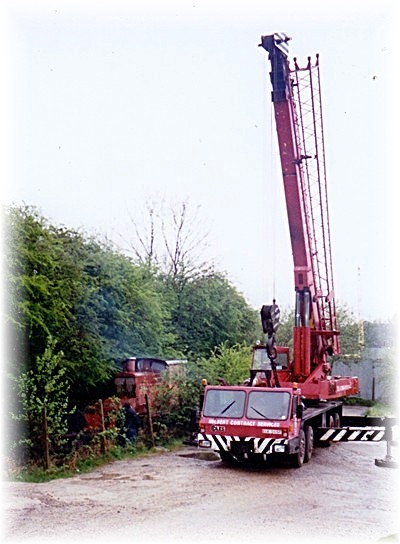 |
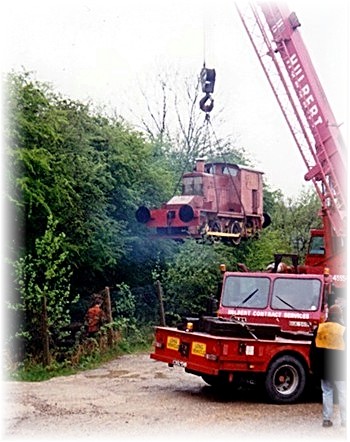 |
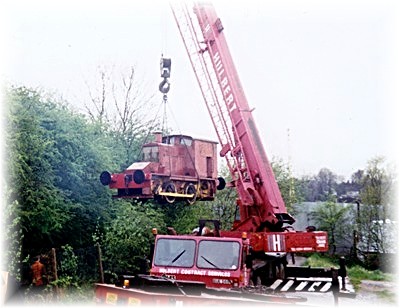 |
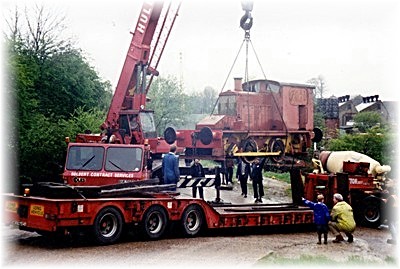 |
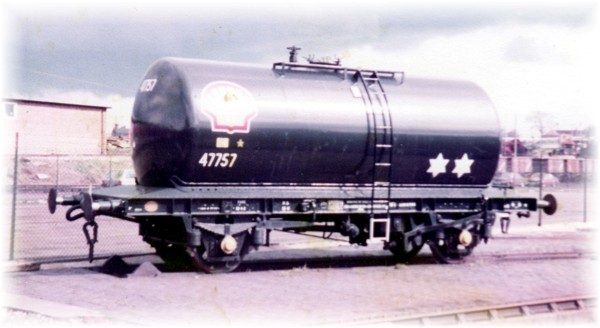 The only piece of rolling stock the
Redditch Railway Society owned a tanker wagon 47757
was purchased by Steve Organ, and was moved to the Chasewater Railway from the Birmingham Railway
Museum where it had been in store.
The only piece of rolling stock the
Redditch Railway Society owned a tanker wagon 47757
was purchased by Steve Organ, and was moved to the Chasewater Railway from the Birmingham Railway
Museum where it had been in store.
The Society continued to stage monthly railway film shows and coach trips to other heritage railway sites around the country until it was decided to disband the society in June 1996.